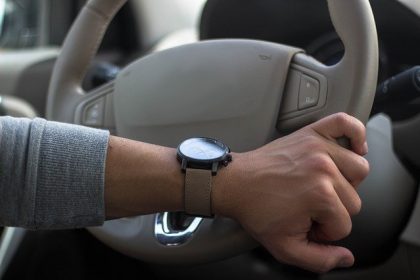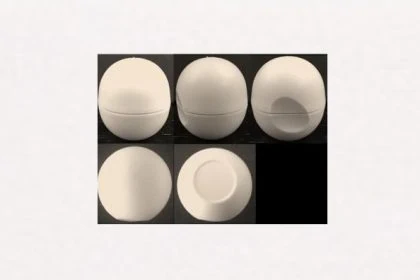According to European law, there are criteria for comparing the similarity of goods and services when examining the likelihood of confusion between identical marks. This list of “relevant factors” is not exhaustive, the CFI ruled; commercial practice is also relevant.

Trademark protection always applies to the claimed scope of protection of the goods and services for the trade mark. Therefore, it is quite possible that a sign (a word, term or image) is protected as a trade mark several times, a good example being “Sherpa”.
However, if a trade mark dispute arises and the likelihood of confusion is examined, a precise comparison of the goods and services claimed is necessary, especially in the case of basically identical or very similar trade marks. The more similar two trade marks are, the more clearly the goods and services must differ, otherwise there is a likelihood of confusion. According to case law, it is not decisive which Nice classes were chosen for the trade mark registration; instead, it is a matter of the goods and services actually claimed and the formulated details thereof. The example of “textiles” (Nice Class 35) shows how ambiguous this can be in practice – you can read more about this HERE.
But what about a comparison of the goods “watch” and “automobiles” in the trademark dispute “Hispano Suiza”? In short: not as clearly dissimilar as it seems.
Criteria for comparing goods and services
What is actually involved in such an accurate comparison of the similarity of goods? In the language of the courts, “all relevant factors are to be taken into account”, which in practice often means that the distribution channels are to be included in the comparison. Also, according to case law, the nature, purpose and use as well as the distinctiveness as competing or complementary goods or services can be taken into account, the so-called “Canon criteria” according to the ECJ judgment “Canon”( EU:C:1998:442) of 1998 (see also “Lloyd vs. Lloyd’s”, EU:T:2019:889).
However, this list of criteria enshrined in case law is not exhaustive, the Court of Justice of the European Union (CFI) has now emphasised in its judgment Hispano Suiza (EU:T:2021:312).
Does commercial practice give rise to a likelihood of confusion?
The present case concerned the comparison of the goods and services for which protection had been claimed under the identical trademark “Hispano Suiza”; the earlier trademark for “watches and time measuring instruments” (Nice Class 14) and “clothing, footwear, headgear” (Nice Class 25). The later contested mark claimed trademark protection for “automobiles” (Nice Class 12).
The applicant – the proprietor of the earlier trademark – had argued before the EUIPO Board of Appeal that the commercial practice in particular led to a likelihood of confusion. This was because there was a “commercial practice” of car manufacturers to extend the use of their well-known mark to other goods, such as clothing, watches and other accessories.
But the Board of Appeal rejected this. The applicant was thus attempting to replace the similarity criteria established by case law – nature, purpose, use, competitive or complementary relationship – with a new criterion, namely commercial practice. The Board of Appeal had ruled that commercial practice was not a relevant criterion, but could only be relevant for establishing a mental link between the trademarks in the context of the ground for refusal under Article 8(5) of Regulation No 207/2009.
However, the CFI ruled that the Board of Appeal was wrong in this decision. For the assessment of the similarity of the goods or services, criteria that go beyond the “canon criteria” may well be relevant, the court ruled.
Even the Board of Appeal had stated in its decision that factors other than the classic criteria could be taken into account – but had not examined the similarity of the conflicting goods with regard to these other factors. Most importantly, the Board of Appeal had wrongly excluded on principle that the criterion of commercial practice could be relevant when examining the similarity of the goods at issue.
Relevance of the commercial practice criterion
In fact, the CFI explained, the criterion of commercial practice is already taken into account in the assessment of the similarity of the goods or services in question, even if it is not explicitly mentioned: joint marketing or the assumption by consumers of joint marketing or the same identity of producers are such cases.
Moreover, whether a criterion is one of the original criteria or has been added later, it is always one among many; criteria are thus independent and equally weighted, the court explained, referring to the 2016 ECJ judgment Hesse (C:2016:34). In that judgment, the ECJ had ruled that the complementarity of goods was also an independent criterion, even if it was only one factor among several others.
Moreover, it has already been held in previous case law that similarity may exist where goods are offered which, although not particularly similar in themselves, are offered in a coordinated manner – and therefore the perception of a close link between goods is facilitated for consumers and that the same undertaking is responsible for the production of those goods (see “Delta Sport”, EU:T:2020:65).
Finally, the CFI emphasised that it also follows from the EUIPO’s EU Trade Mark Examination Guidelines that an business practice of manufacturers extending their commercial practice to neighbouring markets is of particular importance for the similarity of goods. In such cases, according to the Examination Guidelines, it must be examined whether such an extension of business is common practice in the relevant industry.
Therefore, the CFI ruled, the existence of a particular commercial practice is a relevant criterion for the examination of the similarity of the goods or services.
The decision of the EUIPO Board of Appeal (decision of 21 January 2020 (Case R 67/2019-1) was annulled by the CFI.
Would you also like to protect or to defend your trademark?
Our lawyers are experienced in trademark and patent law, national and international law.
Sources:
Judgement of CFI „Hispano Suiza“, EU:T:2021:312
Image:
5033181 | pixabay | CCO License








Leave a Reply